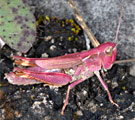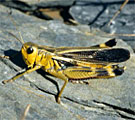Canariola willemsei Morales, 1959
![Canariola willemsei: Male (La Palma, December 2012) [M] Canariola willemsei: Male (La Palma, December 2012) [M]](thumbs/tettigoniidae/willemsei_m2012.jpg)
![Canariola willemsei: Male (La Palma, December 2012) [M] Canariola willemsei: Male (La Palma, December 2012) [M]](thumbs/tettigoniidae/willemsei_2m2012.jpg)
![Canariola willemsei: Male (La Palma, December 2012) [M] Canariola willemsei: Male (La Palma, December 2012) [M]](thumbs/tettigoniidae/willemsei_3m2012.jpg)
![Canariola willemsei: Male (La Palma, December 2012) [M] Canariola willemsei: Male (La Palma, December 2012) [M]](thumbs/tettigoniidae/willemsei_4m2012.jpg)
![Canariola willemsei: Male (La Palma, December 2012) [M] Canariola willemsei: Male (La Palma, December 2012) [M]](thumbs/tettigoniidae/willemsei_5m2012.jpg)
![Canariola willemsei: Female ( La Palma, December 2006) [N] Canariola willemsei: Female ( La Palma, December 2006) [N]](thumbs/tettigoniidae/lapalmabraun_1.jpg)
![Canariola willemsei: Female ( La Palma, December 2006), for the habitat see Calliphona palmensis [N] Canariola willemsei: Female ( La Palma, December 2006), for the habitat see Calliphona palmensis [N]](thumbs/tettigoniidae/lapalmabraun_2.jpg)
![Canariola willemsei: Habitat in the north of La Palma in December 2012. A male was found on a Hypericum shrub along the path [N] Canariola willemsei: Habitat in the north of La Palma in December 2012. A male was found on a Hypericum shrub along the path [N]](thumbs/tettigoniidae/willemsei_h2012.jpg)
Nutrition:
Probably plants (leaves).
Habitat:
I met a female Imago in the north of La Palma together with Calliphona palmensis in a pine forest (Pinus canariensis) with species of the Canarian laurel forest in the understory. In December 2012 I additionally found a male resting on a Hypericum shrub in the very north of La Palma (see biotope photo). Altogether, Canariola willemsei is more a inhabitant of the Laurisilva vegetation type.
Life cycle:
The discovery of the female succeeded just before Christmas 2006. The male was found in December 2012. Probably the Imagines can be observerved all the year. Due to their night activity in the higher zones of canopy they are rarely observered (best method is probably the so-called canopy fogging).
Endangerment factors:
As the Canarian laurel forest (Laurisilva) has already been reduced to a minimum (larger rests only in La Gomera and La Palma, smaller ones in Tenerife: Anaga, N-Teno and Gran Canaria), Canariola willemsei is strongly endangered. Even these rests of Laurisilva are not preserved as the large forest fires in La Gomera showed in 2012.
Remarks:
Canariola willemsei is endemic to the western Canary Islands, especially La Gomera, La Palma and Tenerife.
There are still taxonomic difficulties in this genus, so that it is possible that there are undescribed species left.
Canariola nubigena


